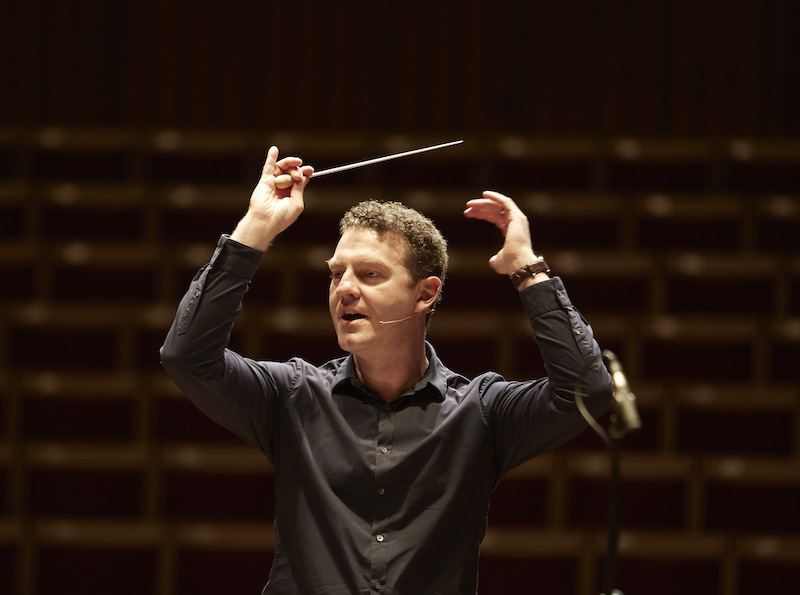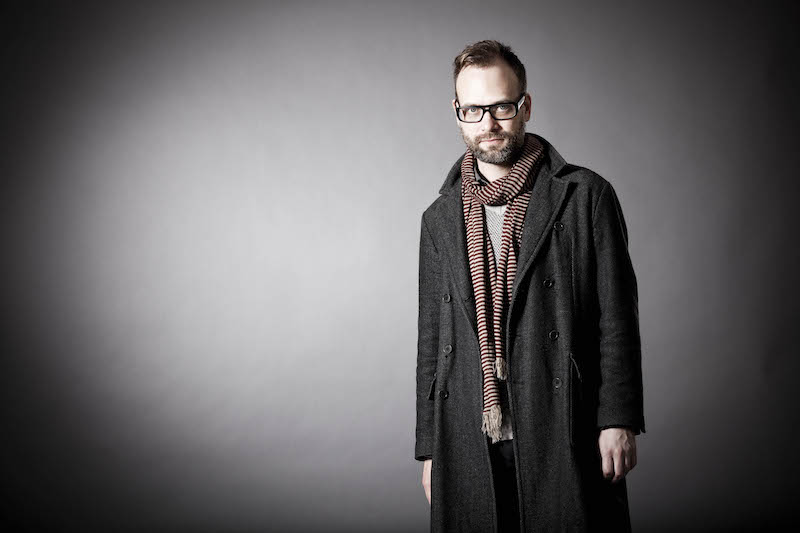St Mary’s Cathedral Crypt, Sydney
August 18, 2018
As Brett Weymark, Artistic and Music Director of the Sydney Philharmonia Choirs, takes to the podium in the performance area created in the crypt – beautifully positioned beneath an arch, in front of a large stained glass window – a hush descends on the audience. The music stands for the choir behind him are still empty. Weymark stands quietly looking out past the audience then lifts his baton. And then out of the silence a dark, low sound – so quiet initially that you are almost not aware it’s there – begins to be heard from the back of the crypt.
The wordless, throbbing bass drone gradually begins to build, as voices nudge each other in a strange, off-centre fashion. Gradually the rest of the choir joins in as the chanting builds chromatically and in volume, with the sopranos soaring high. It’s an extraordinary, unearthly beginning to Path of Miracles, which composer Joby Talbot has said was inspired by a recording he heard by a Bunun tribe of Taiwan.
 Brett Weymark. Photo © Keith Saunders
Brett Weymark. Photo © Keith Saunders
Talbot was commissioned to write Path of Miracles for British choir Tenebrae, who had to delay the July 2005 premiere because of the London bombings, which gave the work even more poignancy when it was performed a week later. Last year, Tenebrae performed it at the Melbourne Festival. Now Sydney Philharmonia Choirs’ Chamber Singers have given two performances of the mystical a cappella work at St Patrick’s Cathedral in Parramatta followed by a concert at St Mary’s Cathedral Crypt in Sydney.
With a poetic libretto by Robert Dickinson, Path of Miracles is inspired by the Camino de Santiago, the pilgrimage also known as The Way of St James, which takes various routes to the Cathedral of Santiago de Compostella, with the main one beginning in Roncesvalles in the foothills of the Pyrenees.
Path of Miracles, which is written in four movements, references four of the major posts along the way that Talbot saw when he visited sections of the pilgrimage: the abbey at Roncesvalles, and the cathedrals of Burgos, León and Santiago itself, with each movement taking its name from the place.
An inspiring piece with a sacred feel, reminiscent of the music of James Tavener and Arvo Pärt, the four movements of Path of Miracles each have a different feel with the music ranging from glorious, otherworldly, complex harmonies to a short burst of plainchant, to intoxicating, insistent repitition, to a joyous, dance-like celebration in the final Santiago movement. Though essentially an a cappella work, in the early section small cymbals are used to create a sound like high-pitched bells.
 Joby Talbot. Photo © Johan Persson
Joby Talbot. Photo © Johan Persson
Dickinson’s libretto uses English and other languages of the pilgrims alongside extant medieval texts. The first movement concerns the martydom and veneration of St James, the second movement shows the challenges of the travellers and the reasons for their pilgrimage, the third movement reflects on the arduous nature of their journey, while the final movement rises to an exuberant, hymn-feel celebration as Santiago comes into sight.
The Sydney Philharmonia Choirs team uses the crypt setting beautifully, with small candle lights down the aisles and clustered on the floor of the performance area. The singers (with small lights illuminating their scores) move to and from the stage to take up different positions during performance, using the central and two side aisles, with soloists and groups performing in the central aisle, and everyone moving to the back of the crypt during the third movement Leon. At the end, they process from the space, leaving the venue through different doors as the sound gradually dies away.
The singing is glorious, with the ringing voices of the sopranos soaring stratospherically with angelic, bell-like clarity over the rest of the choir. The tenors provide a sure, fulsome sound, while the altos and basses provide much of the narrative.
Running for an hour it was perfect in itself, without needing anything else to make for a beautiful night of inspiring, etheral music-making.











Comments
Log in to join the conversation.